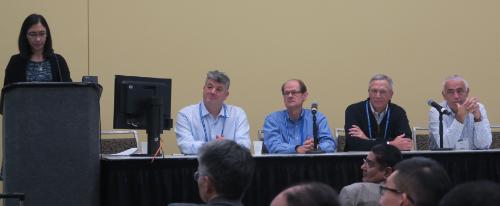November 15, 2017

Developing vaccines for bacterial enteric pathogens poses unique challenges; thus, identification of the correlates of immunity (protection) for individual organisms remains a major goal. Diarrheal diseases continue to have a high burden in developing countries and plague the global health community. Researchers from the Massachusetts General Hospital, PATH, Tel Aviv University, and the Center for Vaccine Development at the University of Maryland School of Medicine joined together at ASTMH to share the state of the science on immune responses to cholera, Enterotoxigenic Escherichia coli (ETEC), Shigella, and Salmonella Typhi (S. Typhi).
While natural infection sometimes results in long-lasting immunity, vaccine development for diarrheal diseases has been slow due to limited efficacy, especially in children under five, and the problematic identification of immunological correlates of protection, which are important for vaccine development and evaluation. According to CVD’s Marcelo Sztein, MD, vaccine development involves a never ending search for the optimal balance between reactogenicity (common, short term adverse effects such as soreness at the injection site) and immunogenicity (positive immune response to the vaccine against the pathogen).

Dr. Sztein hypothesized that protection against typhoid requires a balance between effector T cell responses and regulatory T cell responses. If the effector T cell response is too high and regulatory T cell response too low, the end result might be high levels of inflammation; in contrast, if the effector T cell response is too low and regulatory T cell response too high, the end result might be ineffective protection. He further suggested that identifying effective immunological correlates of protection among multiple non-protective or downregulatory immune responses might hold the key for more effective vaccines against typhoid fever.
Contact
Office of Public Affairs
655 West Baltimore Street
Bressler Research Building 14-002
Baltimore, Maryland 21201-1559
Contact Media Relations
(410) 706-5260

